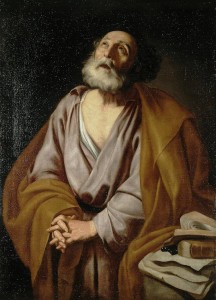
Saint Agnes of Bohemia (1205-1282)
Image: Nguoi Lu Hanh Vong
(Franciscan Media) Agnes had no children of her own but was certainly life-giving to all those who knew her. The daughter of Czechoslovakia King Ottokar I and Queen Constance of Hungary, at the age of 3 she was betrothed to the Duke of Silesia (who died three years later) as she grew up, Agnes decided she wanted to enter a religious life.
After declining marriage proposals to King Henry VII of Germany and King Henry III of England and Lord of Ireland, Agnes was faced with a proposal from Frederick II the most Holy Roman Emperor, Agnes appealed to Pope Gregory IX for help and the Pontiff was persuasive–Fredrick magnanimously said that he could not be offended, if Agnes preferred the King of Heaven to him.
Agnes subsequently built a hospital for the poor, a residence for the Friars and she financed the construction of a ‘Poor Clare Monastery’ in Prague. In 1236, Agnes and seven other Noblewomen entered this monastery. St Clare, sent five Sisters from San Damiano to join them, writing Agnes four letters, advising her on the beauty of her vocation and her duties as the head of the Abbey.
Agnes now the Abbess, preferred to be called ‘Senior Sister’ and became known for prayer, obedience and abstinence but despite her position, she enjoyed cooking for the other Sisters and mending the clothing of lepers–the Sisters found Agnes very kind but strict regarding the observance of poverty–Agnes declined her brother’s offer to establish an endowment for the monastery.
Devotion to Agnes grew following her death on the 06 March, 1282 she was Canonized by Pope Saint John Paul II on the 12 November, 1989 just five days before the start of the ‘Velvet Revolution’ according to Franciscan Tradition which brought down the fall of Communism in Czechoslovakia.
It was on the following Friday that riot police suppressed a student demonstration in Prague, which led to a series of more demonstrations–On the 28 November, less than 3 weeks after Agnes of Bohemia was Canonized, the Communist party announced that it was relinquishing power. Saint Agnes of Bohemia was heralded as the Saint that helped bring down the Communist regime.
Saint Agnes of Bohemia became known as the ‘Princes Nun’ and is revered in the Czech Republic not only for her historical importance but also as a model for behavior today.
Related: 5 Reasons the Church Condemns Communism as “Intrinsically Wrong” – ChurchPOP







 Miracle: St. Polycarp in the Flames
Miracle: St. Polycarp in the Flames
 The Chair of Pope Saint Peter —
The Chair of Pope Saint Peter —